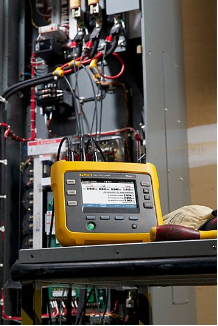Data Logging For Electrical Systems
 A data logger (or sometimes called a "datalogger" or "logger") is a specialized electronic device that measures and records specific data over a certain period of time or in relation to its location either with a built-in instrument or sensor or via external instruments and sensors.
A data logger (or sometimes called a "datalogger" or "logger") is a specialized electronic device that measures and records specific data over a certain period of time or in relation to its location either with a built-in instrument or sensor or via external instruments and sensors.
Common Uses for Data Logging
- Monitoring voltage and amperage for specified durations to confirm quality.
- Monitoring voltage and amperage for specified durations to monitor for anomalies such as spikes and losses.
- Identifying 'ghost' issues that are reportedly intermittently present.
- Providing proper reports that can be conveyed to authorities and power companies wherein power quality issues result in claims or damages to property and equipment.
Typical Applications
- Data Logging equipment is connected at the ahead of the source affected load, monitored, reported and analyzed for various determinations.
- Typically, depending on the subsequent issue, the logger is left in place for 24-72 hours.
- Under extreme cases, the logger is left in place or moved several times for 1-3 weeks until data reflects the pinpointed issue.
- The data collected helps determine the proper treatment of troublesome anomalies and upon detection, usually results in the creation of a proper repair scope.
This article has been shared by Direct Service, Construction and Design to specifically accommodate our intended clientele. The intent of sharing this information is to better inform the public of these general topics, expand knowledge and safety for all and provide crucial information in regard to their MEP and building systems and/or assets. It is NOT our recommendation that any article recommendations or how-to scenarios be attempted by anyone other than a qualified or competent person.
